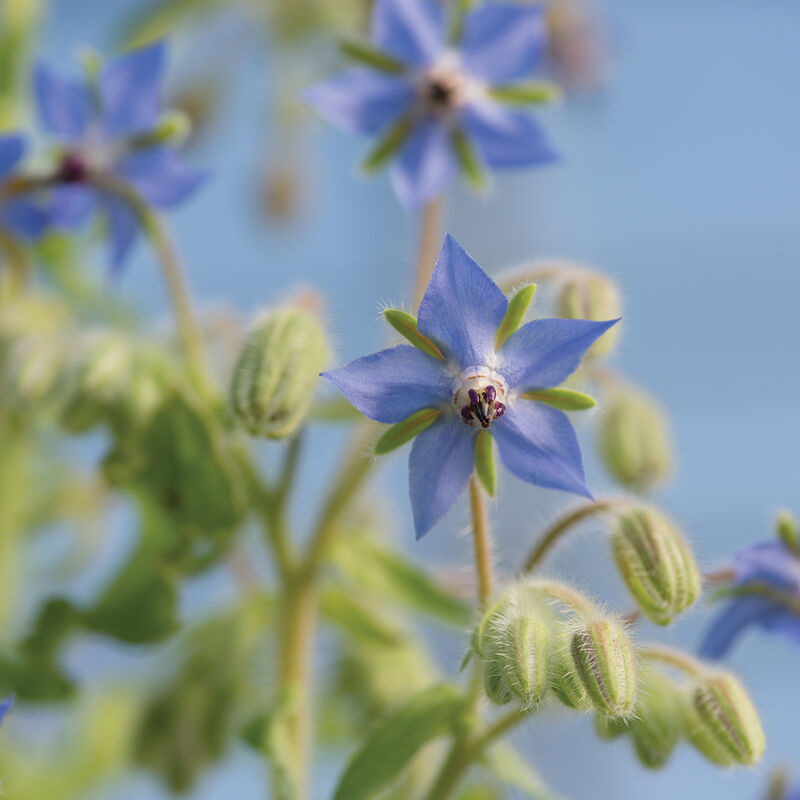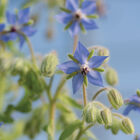Borage Organic Borage Seed
Product ID:912G.11912G
Borage Organic Borage Seed
Product ID:912G.11912G
Edible flower with mild cucumber flavor.
Large plants bear hundreds of small edible flowers, mostly blue and some pink. Long harvest period. Borage flowers attract bees and butterflies. USDA Certified Organic.Specs:
DAYS TO GERMINATION:
7-14 days.SOWING:
Direct seed (recommended): Sow seeds as soon as the soil has warmed in the spring. Plant 1/4- 1/2" deep, 3 seeds per foot in rows that are 24" apart. Thin to 12" spacing for individual plants.Transplant: Starting borage for transplanting is possible, but not recommended, as it develops a taproot and is somewhat difficult to transplant.
LIGHT PREFERENCE:
Sun.SOIL REQUIREMENTS:
Grows well in average soil and will perform well even in poor soils.PLANT HEIGHT:
18-30".PLANT SPACING:
12".HARDINESS ZONES:
Annual.HARVEST:
Harvest borage as it begins to flower. Dry flowers quickly under moderate heat with good air circulation.Note: Borage readily self-sows.
SCIENTIFIC NAME:
Borage officinalisJohnny's is committed to your success, every step of the way.
We want you, our customer, to be 100% satisfied with all of our seeds, tools, and supplies.
If anything you purchase from us proves unsatisfactory, we will either replace the item or refund the purchase price.






